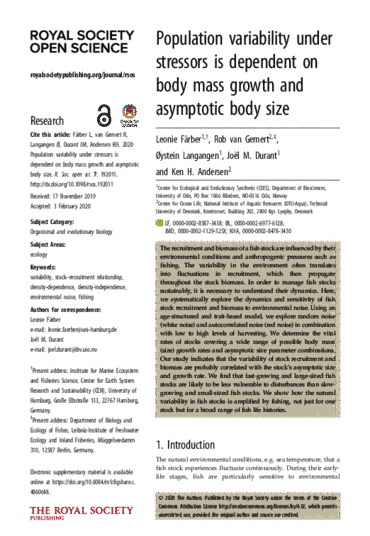The recruitment and biomass of a fish stock are influenced by their environmental conditions and anthropogenic pressures such as fishing. The variability in the environment often translates into fluctuations in recruitment, which then propagate throughout the stock biomass. In order to manage fish stocks sustainably, it is necessary to understand their dynamics. Here, we systematically explore the dynamics and sensitivity of fish stock recruitment and biomass to environmental noise. Using an age-structured and trait-based model, we explore random noise (white noise) and autocorrelated noise (red noise) in combination with low to high levels of harvesting. We determine the vital rates of stocks covering a wide range of possible body mass (size) growth rates and asymptotic size parameter combinations. Our study indicates that the variability of stock recruitment and biomass are probably correlated with the stock's asymptotic size and growth rate. We find that fast-growing and large-sized fish stocks are likely to be less vulnerable to disturbances than slow-growing and small-sized fish stocks. We show how the natural variability in fish stocks is amplified by fishing, not just for one stock but for a broad range of fish life histories.
Population variability under stressors is dependent on body mass growth and asymptotic body size
Projekt Boddenhecht , Rezensierter Artikel

Färber, L., Van Gemert, R., Langangen, Ø., Duran, J. M., Andersen, K. H. (2020). Population variability under stressors is dependent on body mass growth and asymptotic body size. Royal Society Open Science, 7, 192011
Veröffentlicht
: 2020
Erschienen in
: Royal Society Open Science, 7, 192011
